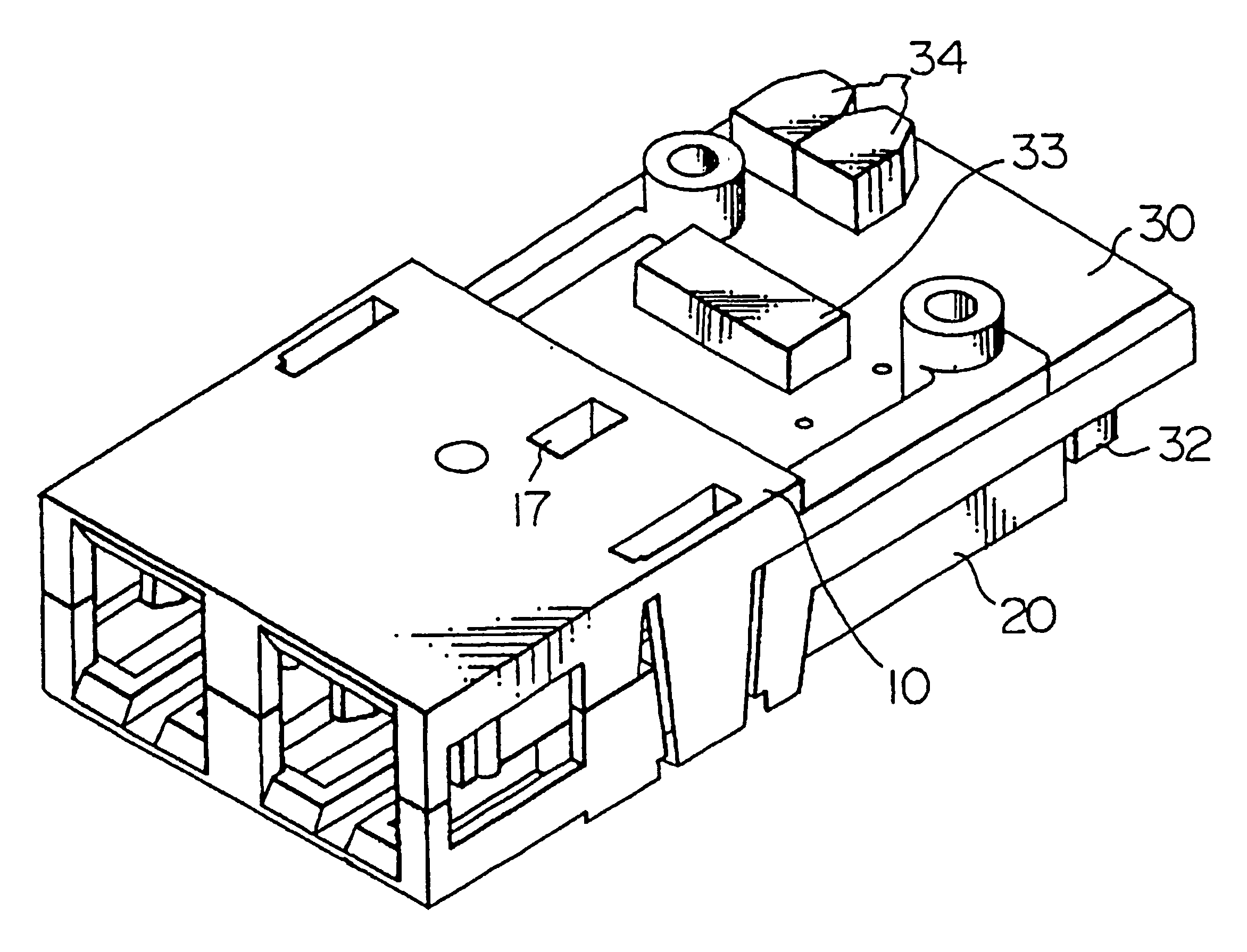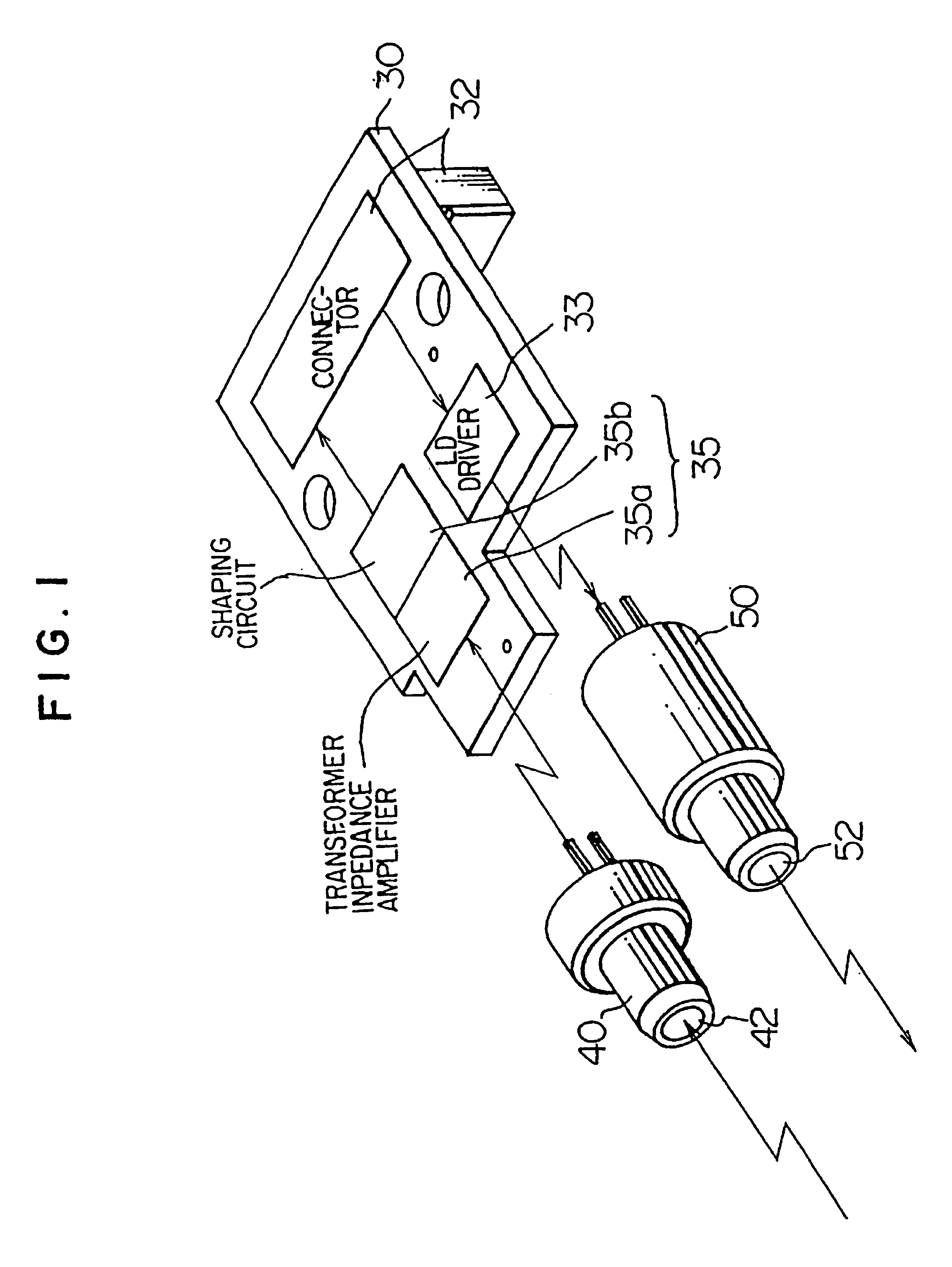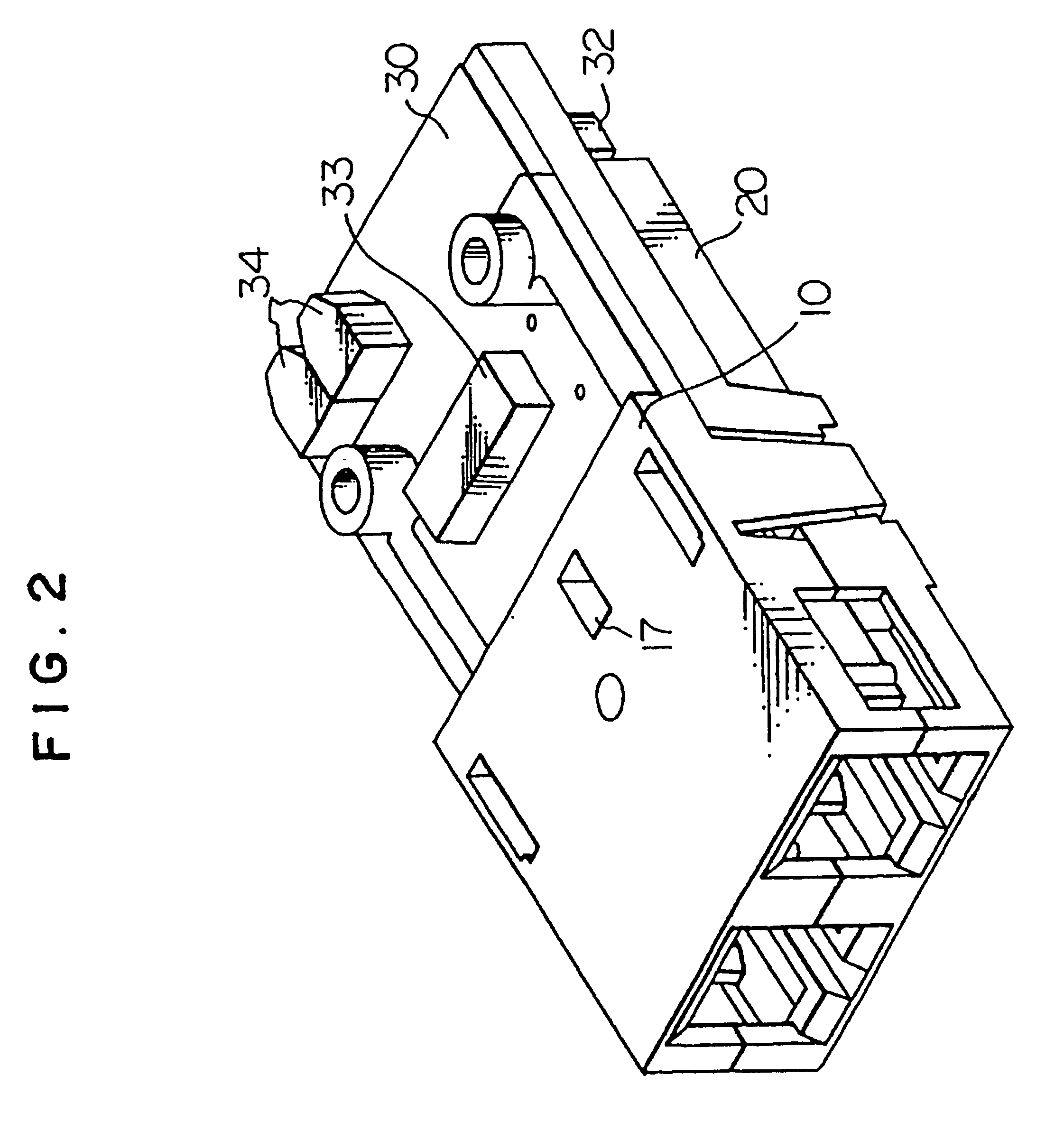Fiber optic module
a fiber optic module and fiber optic technology, applied in the field of fiber optic modules, can solve the problems of limiting the design flexibility of mother boards of system manufacturers, affecting the requiring the inevitable large size of the entire unit, so as to achieve high design flexibility of mother boards, low cost, and compact size
- Summary
- Abstract
- Description
- Claims
- Application Information
AI Technical Summary
Benefits of technology
Problems solved by technology
Method used
Image
Examples
Embodiment Construction
[0041]The present invention will be explained with reference to the accompanying drawings, in which parts having the same reference numerals represent identical parts.
[0042]Referring first to FIG. 1, there is shown a block diagram of a fiber optic module in accordance with a first aspect of the present invention. In FIG. 1, a printed circuit board (which will be referred to as the PCB, hereinafter) 30 functions to send an electric signal (serial data) received at a PCB connector 32 to a laser diode (LD) driver 33 to drive an LD element (not shown and refer to FIG. 8) located within an LD module 50 and to transmit the data in the form of an optical signal to an optical fiber (ferule: not shown) inserted in an opening 52 of the LD module 50. A photodiode (PD) module 40, on the other hand, receives an optical signal from an optical fiber (not shown) inserted in an opening 42 of the PD module 40, converts the optical signal to a current through a PD element (not shown: refer to FIG. 8),...
PUM
 Login to View More
Login to View More Abstract
Description
Claims
Application Information
 Login to View More
Login to View More - R&D
- Intellectual Property
- Life Sciences
- Materials
- Tech Scout
- Unparalleled Data Quality
- Higher Quality Content
- 60% Fewer Hallucinations
Browse by: Latest US Patents, China's latest patents, Technical Efficacy Thesaurus, Application Domain, Technology Topic, Popular Technical Reports.
© 2025 PatSnap. All rights reserved.Legal|Privacy policy|Modern Slavery Act Transparency Statement|Sitemap|About US| Contact US: help@patsnap.com



